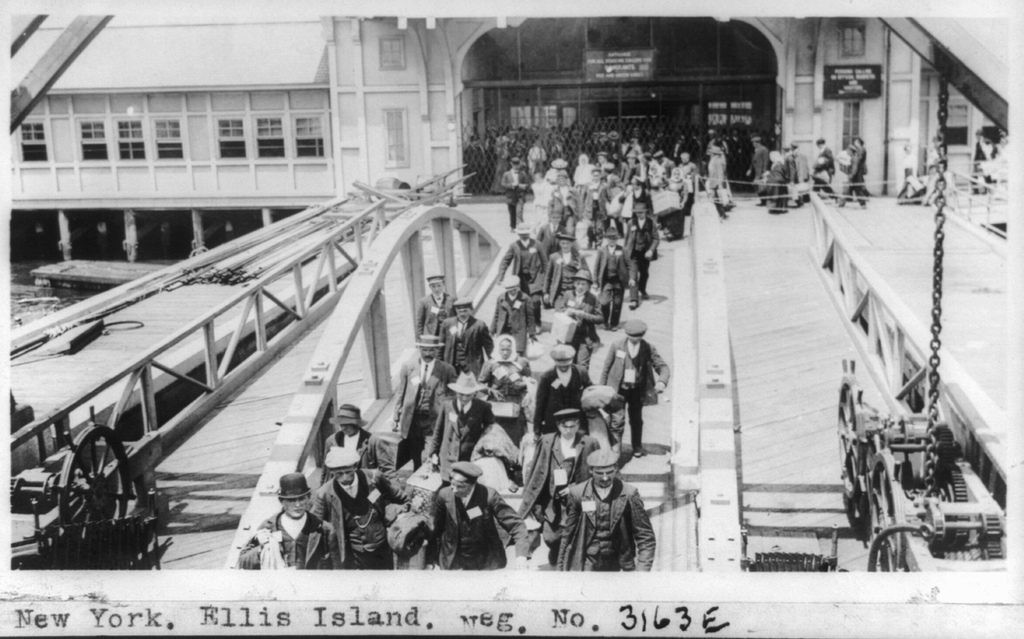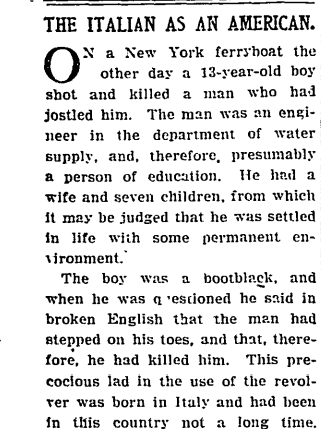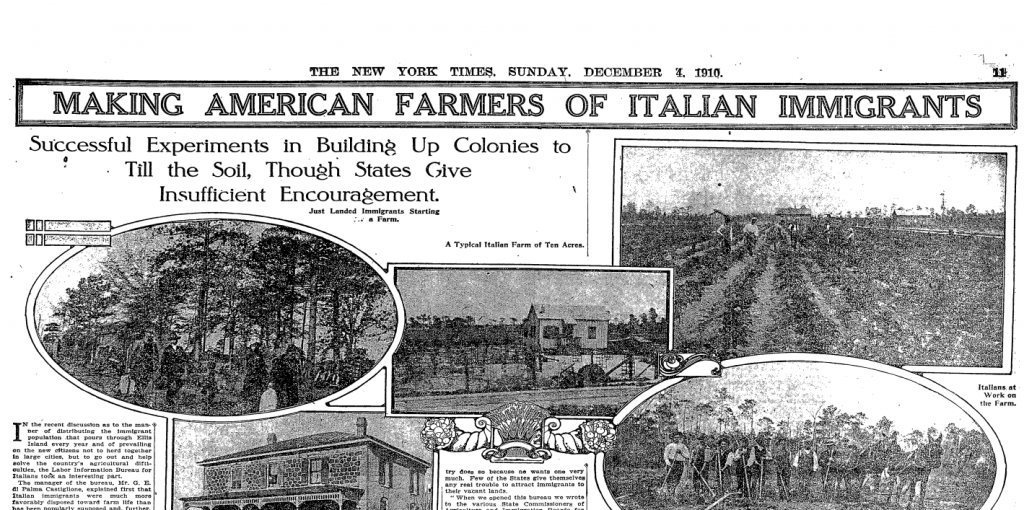A Visual of Those Who Came

This picture displays a sea of Italian immigrants crossing the bridge on Ellis Island as they enter the United States. Both the men, and the women are dressed in formal attire which is accompanied by a name tag, indicating that they were new to the Country. The line of Italian immigrants stretches farther than the picture can hold. This photo was not taken during the time period when there was a surge of Italians immigrating to the United States. Years after this surge, you can see just how many would still come. One could only imagine how many Italian immigrants would fill this bridge in a day at its peak. This picture gives a good representation of how many Italian immigrants wanted to start a new life or chase their dream in the United States. The Italians to America Files can help you quantify what years were like not during the peak of Italian immigration (Center of Immigration Research 1901).
What The Papers Told The Public

The article discusses how a young Italian boy kills an “educated father with a wife and children” on a boat that is headed for the United States. The author then describes the two sides of the spectrum as to whether the public like the Italian immigrants or hate them. This article was published during a time where hostility towards Italians was normal. Many Italians were coming in each year through Ellis Island. This source gives a good example of the feelings the public held towards the Italian immigrants who were coming in each year. The article also helps to understand what kind of position Italian immigrants were put in at the time with reference of there ethnicity being common when they would commit a crime. The picture of Ellis Island in the National Photo Collection can also show you how many Italians were located on one boat at a time and how this one incident is most likely an isolated event (National Photo Company Collection, 1909-1932).
The “Typical” Occupation

This article discusses the amount of Italian immigrants who chose to be farmers in the United States. Many chose to not move far from where they entered the country. Instead of purchasing land, many immigrants found land and claimed it for themselves. The article also mentions the feeling of comfort many Italian immigrants felt by choosing farming as their occupation and supported this with the amount of Italian immigrant farmers in each state. During the time this article was published, there were many Italian immigrants still entering the United States. The stereotype of Italian immigrants as farmers was still present. The article is also publicizing only one occupation that Italian immigrants would be seen doing. This source is important because it is telling the public (and adding to the stereotype) that most Italian immigrants are farmers and they’re illiterate. This article is also important because it offers an idea of how the Italian immigrants found their farms. Although the article seems to praise the these families, many Italians, such as Panzunio, became frustrated when the only employers he could find were for farming and cheap labor (Panzunio 75-81).
Hard Times Came Often
The author, Panzunio describes how hard it was to be an Italian immigrant at the turn of the century. Panzunio was born in 1884 and came to the United States from Italy in the early 1900s. He mentions that he could only find work as a laborer and how he grew frustrated at the lack of opportunities outside of cheap labor and farming. During the turn of the century, many Italian immigrants worked in cheap labor and farming. The lower class was filled with Italian immigrants because of these occupations. This book is important because Panzunio offers the idea that Italians did not chose these jobs, but rather they had no choice. This gives some clarity as to why many Italian immigrants took labor and farming jobs. The article by the New York Times that talks about Italian immigrant farmers may have added to the public perception of what Italians should do for work (The New York Times, December 4, 1910).
“It is a matter of common knowledge, at least among students of immigration, that a very large percentage of Italian immigrants were “contadini” or farm laborers in Italy. American people often ask the question, “Why do they not go to the farms in this country?””
Constantine Panzunio
